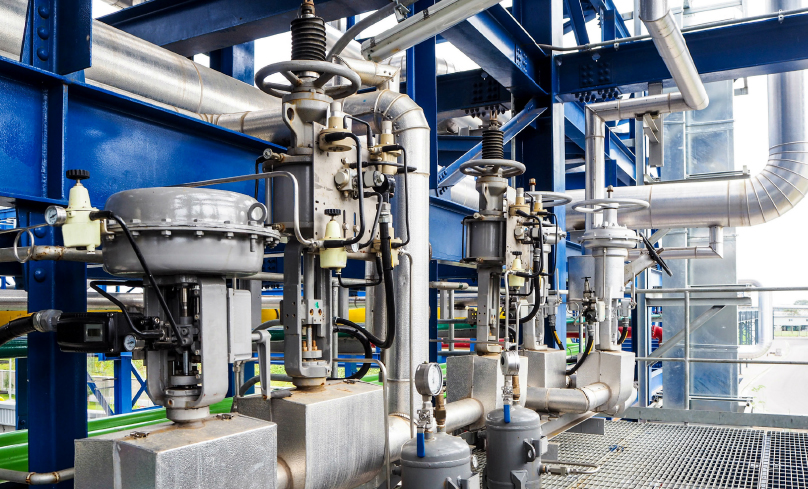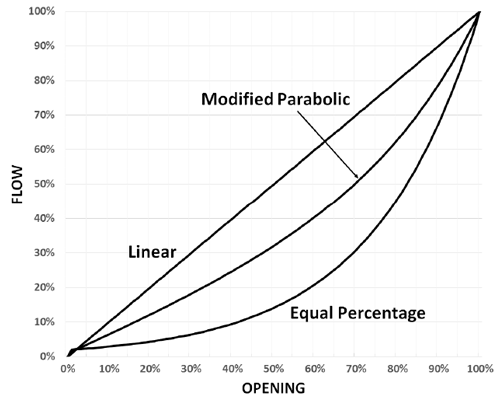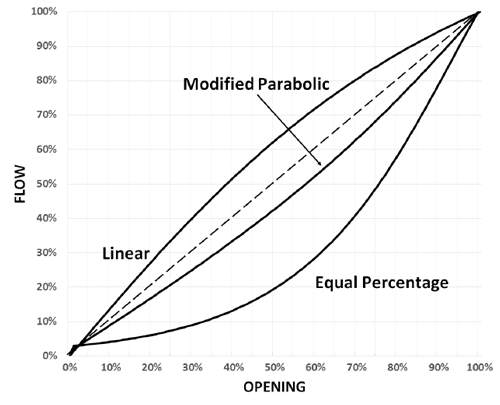- By Joao Bassa, MSc
- June 29, 2023
- Features
Summary
Learning the basics can ease loop tuning frustration and ensure stability.

During plant operations, it seems that tuning control loops is an ongoing task, which can be a continual frustration to control engineers and technicians. Process control valve flow characteristics make regular loop tuning a necessity. Understanding the basics can ease the frustration and ensure loop stability. But first, some basics about why this happens.
Controlling the desired variable
Typically, process control loop feedback strategies use “flow” as the manipulated variable to control the desired variable. To achieve this, a controller output signal is sent to a control flow valve that will deliver the necessary flow amount (manipulated variable) to keep the controlled variable as close as possible to the setpoint.
The ideal expectation is that the flow through the control valve is proportional to the controller output signal such that the loop feedback “gain” remains nearly constant for all process flow conditions and the loop’s required tuning parameters remain the same for all operational conditions. However, this does not happen in all cases.
Referring to the temperature control example in Figure 1, the steam inlet pressure is usually constant. Therefore, the pressure differential (Δp) across the valve is also almost constant, and the steam flow amount through the control valve is approximately proportional to the valve opening position (if the valve characteristic is linear) or, consequently, proportional to the controller output signal.
This is the desired control loop operation.

Controlling flow through a centrifugal pump
Referring to the pump flow control example in Figure 2, the pump outlet pressure will decay as the amount of flow increases. In addition, the pipeline pressure drop will increase as the flow increases. Consequently, the Δp across the valve will be reduced as the flow increases. The amount of flow through the valve will not have a proportional relation to the valve opening position if the same valve type as in the temperature control example (Figure 1) is used. That means the relationship between the controller output signal versus the control valve flow rate will be changing throughout all the different operational conditions and the loop tuning parameters will need to be retuned, depending on the actual process operational condition.

Some modern digital control systems have self-tuning/auto-tuning functionality that can reduce or minimize the inconvenience of loop tuning. However, the correct valve flow characteristics selection will save a lot of trouble and money.
Control valve flow characteristics
For continuous process control valves, there are three inherent flow characteristics that can be specified when ordering the valve. It is important to note that there is a difference between “inherent valve characteristics” and “installed valve characteristics.”
The “inherent characteristic” of a valve (Figure 3) is the characteristic published by the manufacturer, based on tests performed in a system where great care is taken to ensure that the pressure drop across the test valve is held constant at all valve openings and flow rates. The “installed characteristic” (Figure 4) is the relationship between valve position and flow in the specific system being considered, considering any changes in the Δp available to the control valve due to the approximately flow squared relationship between flow and piping pressure losses and/or a centrifugal pump head curve.


The three control valve characteristics are:
- Linear
- Modified parabolic
- Equal percentage
Inherent control valve flow characteristics are established assuming a constant Δp across the valve. If the valve Δp is reduced as the flow increases, meaning that there is a valve pressure drop decay (vpdd), then the “installed control valve characteristic” will be different, changing the proportion from controller signal output to the control valve flow.
Some modern digital control systems have self-tuning/ auto-tuning functionality that can reduce or minimize the inconvenience of loop tuning.
A simple way to choose among the inherent control valve flow characteristics is to calculate the vpdd. The ratio between the high flow and low flow valve pressure drop Δp can yield an indication of how to choose a valve flow characteristic for a given application.
vpdd = Δp(qmax)
Δp(qmin)
where:
vpdd=valve pressure drop decay Δp(qmax)=valve pressure drop at maximun flow Δp(qmin)=valve pressure drop at minimun flow
Using the vpdd calculation, the control valve characteristic can be chosen according to the following:
- For linear valve characteristics, vpdd is between 0.60 and 1.0.
- For modified parabolic valve characteristics, vpdd is between 0.35 and 0.60.
- For equal percentage valve characteristics, vpdd is between 0.20 and 0.35.
If vpdd is less than 0.20, review the pipe or other specs. There should be a minimum of 0.20 vpdd to reach a reasonably linear control loop.
It is also possible to manage control valve characteristic requirements through the valve positioner. Control valve positioners can typically transform a linear control valve flow characteristic to a modified parabolic or equal percentage characteristic, or vice-versa. However, it is better to have the correct control valve in place.
Reader Feedback
We want to hear from you! Please send us your comments and questions about this topic to InTechmagazine@isa.org.


